Last Updated on April 17, 2021
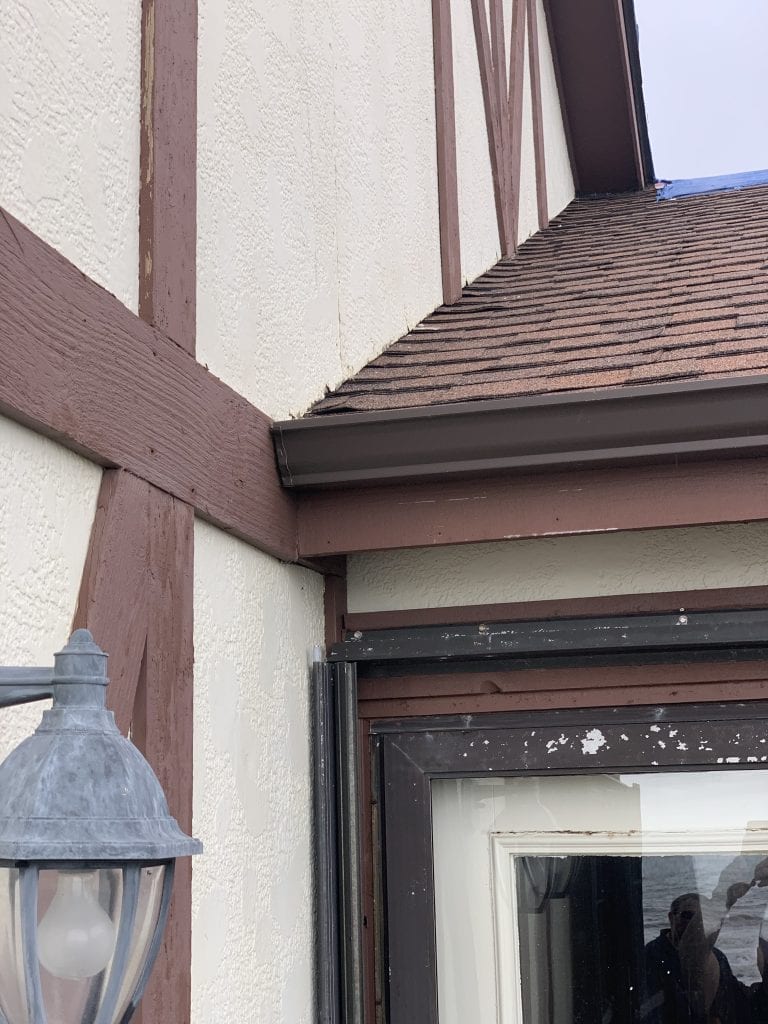
You could have a serious wood rot and moisture problem, and not even know it. We ran across this situation in North Carolina. The roof above looks fine to most people, but there are at least two major issues. Just wait until you see inside the wall!
The first issue is that there is no rain diverter. Also called a “kick-out flashing,” diverters channel water away from the wall at the bottom of a roof slope that follows a side wall, like above. In fact, it’s a pretty safe bet that if you have a slope of your roof up against siding or stucco like the photo above, your roofer didn’t put a diverter in. Go check. This article will wait. Here’s a photo of one below.
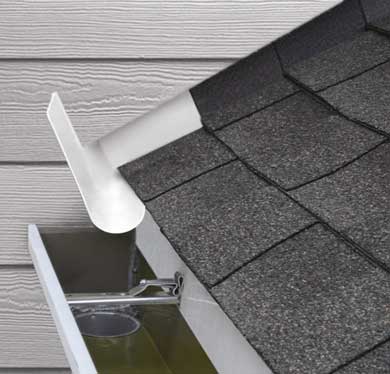
This seems like a simple thing, and I’ve yet to see an insurance adjuster include one on an estimate, even though the configuration above is extremely common on shingle roofs. Most roofers omit them as well. The homeowner doesn’t know any differently, and the roofing contractor saves a few bucks.
Without this flashing, water runs along the edge of the siding and roof, and then runs down the wall. In the case above, it even runs onto the trim board in the case above. Even if that trim is caulked properly, chances are that the water is going to find its way between trim and stucco, into the stucco, and into the wall.
Well, it’s just rain water… how bad could it be? It should be obvious that all construction is designed to keep water on the outside of a structure. Walls aren’t supposed to get wet on the inside. It ruins the insulation, saturates the sheathing plywood, saturates the drywall from inside the wall (you might not notice this for a while because your paint is latex – you basically have a rubber coating on the inside of your drywall). This problem can go for years, and just imagine in a warm, dark, and moist environment (yes, we said moist – it’s gross) what this can do. Imagine no longer, we’re going to show you.
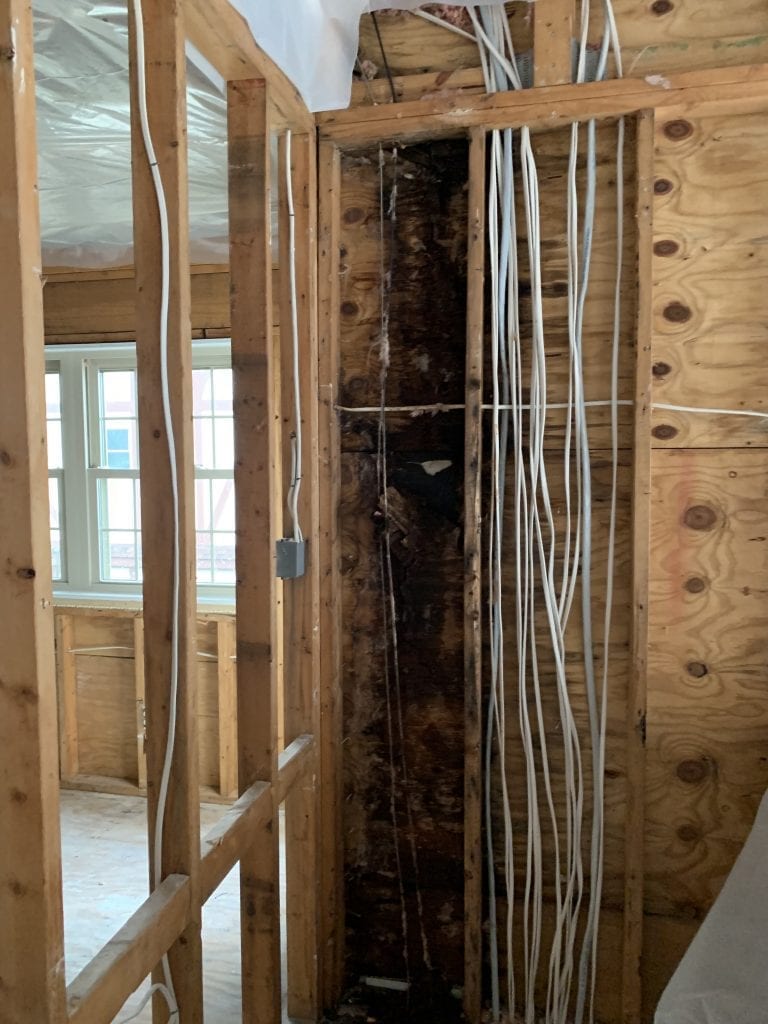
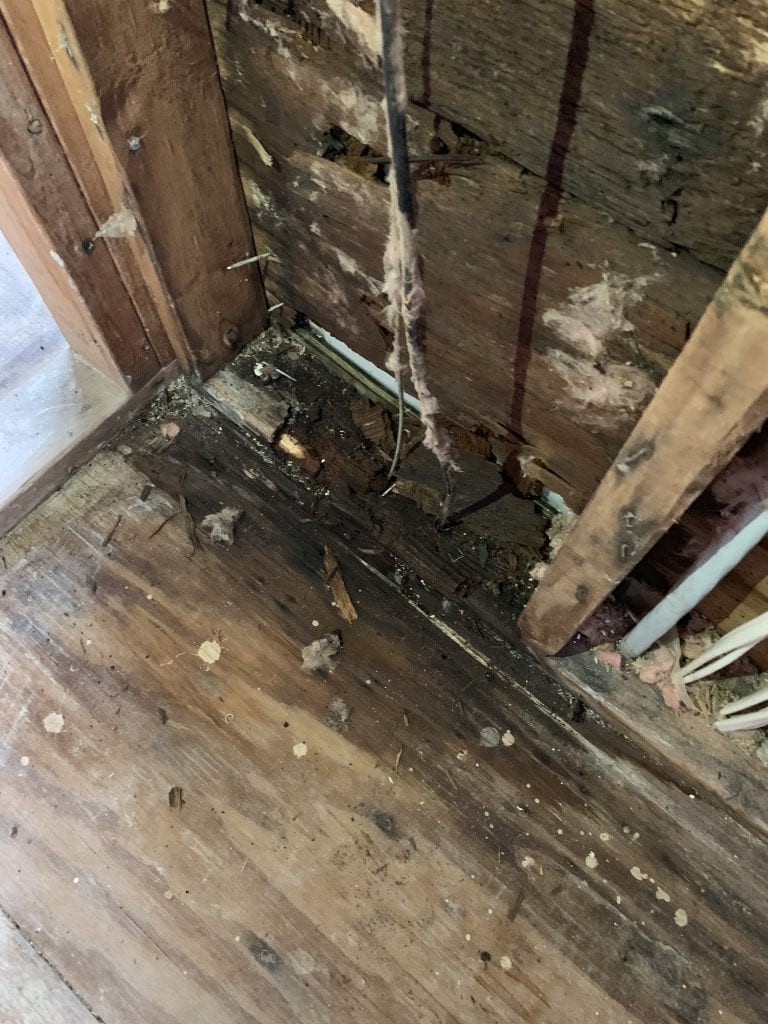
Doesn’t that look nice? The plywood is soft and rotted and growing mold and mildew. The insulation was saturated and ruined. The bottom plate of the wall is ruined. The subfloor is ruined. This is not a cheap problem to fix. This condo happened to have additional hurricane damage, so it was gutted for other reasons, and then this was discovered. Imagine seeing your paint bubbling and some black spots down by the corner of the wall and floor, and then finding this inside. This is major construction. Why? Because the previous roofer was either incompetent, lazy, or cheap. That kickout flashing costs between $10 and $25 if you buy one, and don’t bend it yourself from flashing material already on hand.
In the scenario above, the rotten wood had to be cut out. The rest was dried. Then cleaned. Then sealed with an anti-microbial germicide. Then that’s allowed to dry. Next it’s coated with a sealer, similar to Kilz but with a anti-microbial inhibiting agent in it. This is to prevent any mold or mildew spores from re-growing and spreading back into the dark walls once they are sealed up again. It also helps keep any odor from seeping into the house. All that because someone was too lazy to take 90 seconds to install $10 worth of metal.
I mentioned there was another problem on that photo above. Here’s another example of the same issue, but with siding. Can you spot the problem?
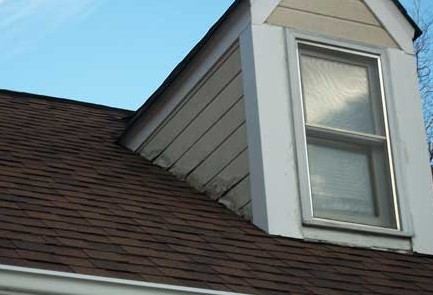
The siding should have a one inch clearance between the shingles and the siding. There should be step flashing underneath that siding in the corner, but even with that flashing, with the siding right on the roof, water is trapped and just soaks right into that siding. Capillary action takes it up the wall to the sheathing, and then you get the same kinds of issues. Now look at the photo at the top again. You can see that the stucco is starting to deteriorate because the water has been getting under it.
If you have some of the problems shown here, you really should contact a roofing contractor who understands these issues and can fix them for you. Hopefully the inside of your wall hasn’t progressed as far as these photos. But if it has, you need to take care of that as soon as possible. Wood rot is like a disease in your walls, it continues to eat away at them until the damage can be catastrophic in some cases. Moisture problems are no laughing matter, when they are in your walls. Call us today if you want us to have a look at your roof situation.

